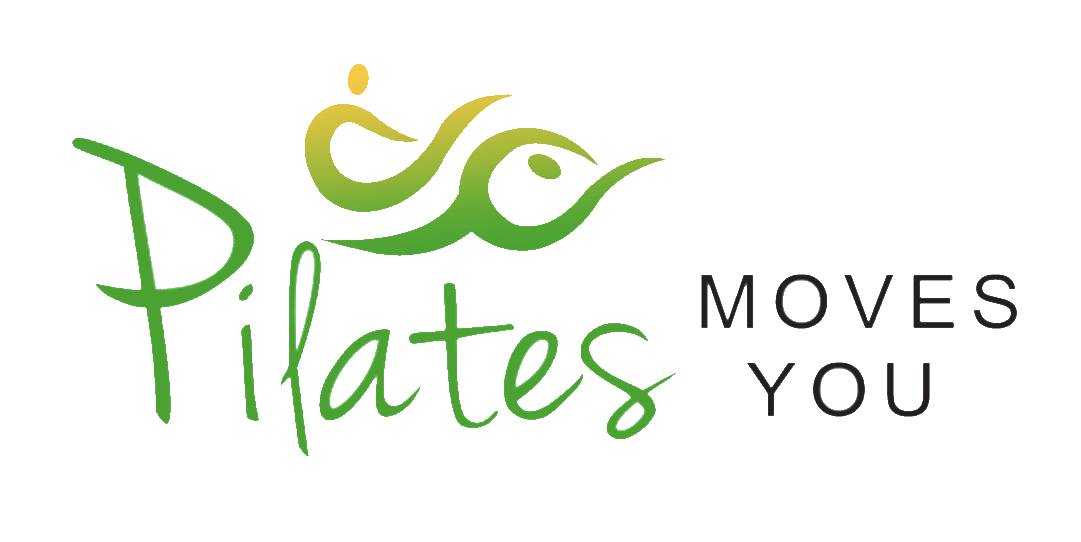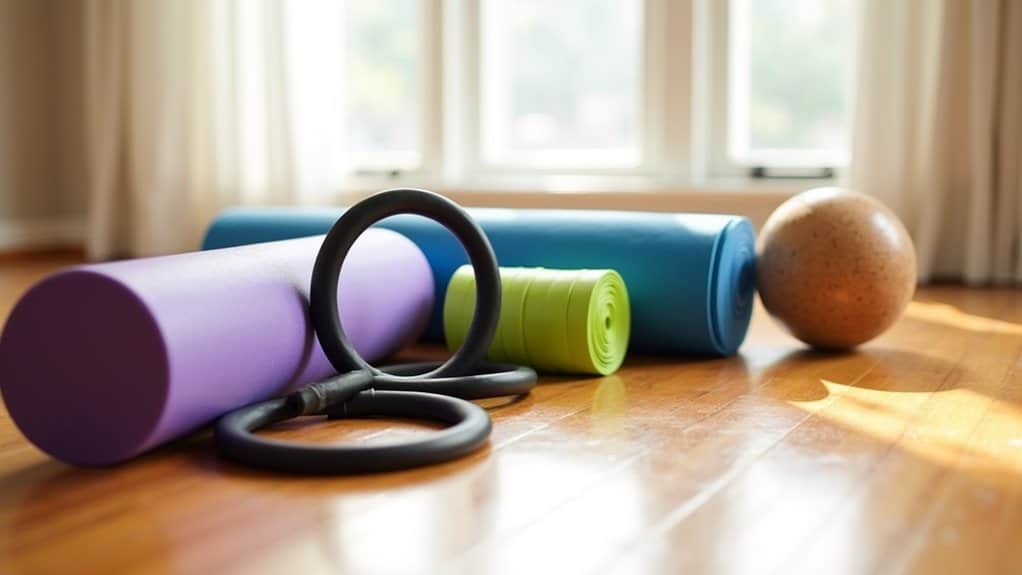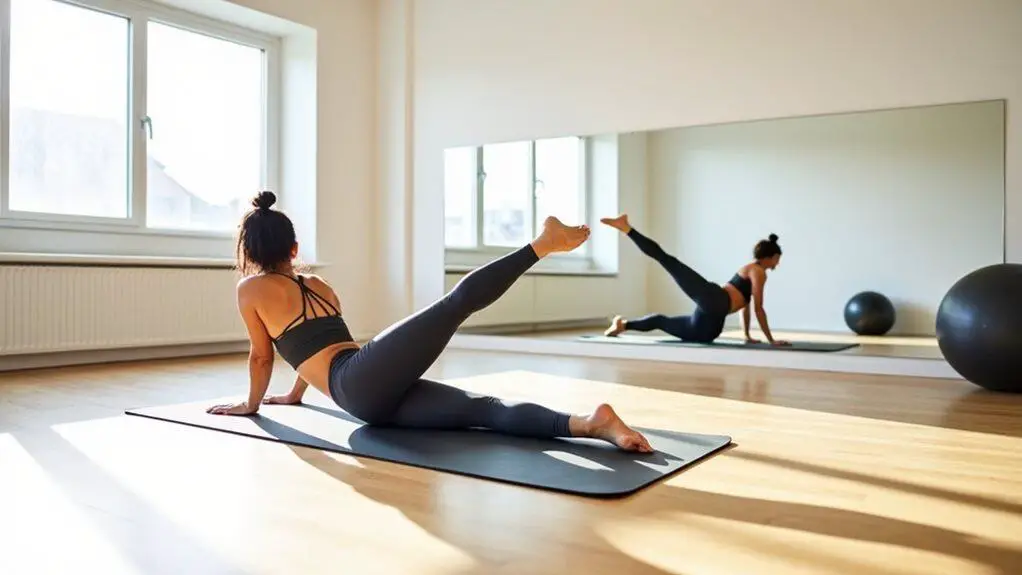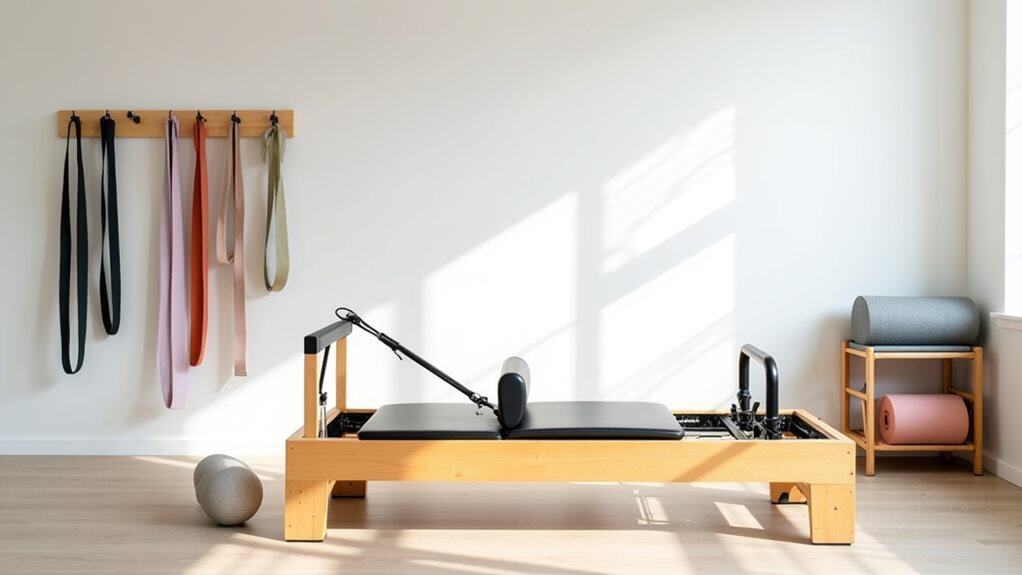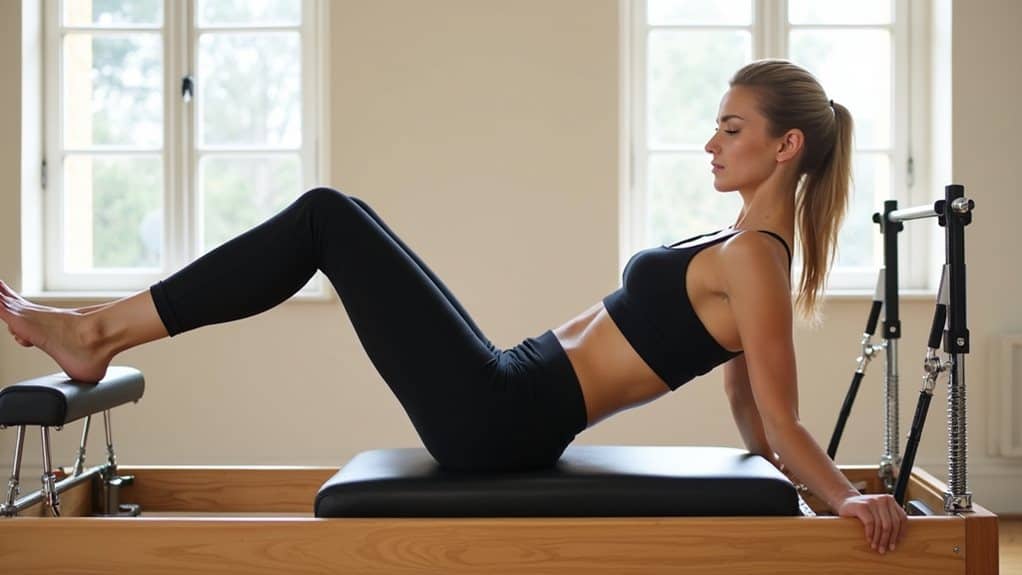Transform your living space into a Pilates studio with these five essential pieces of equipment. Start with a high-density exercise mat (about 1/2 inch thick) for proper cushioning and stability. Add resistance bands with varying levels and a Pilates ring for targeted muscle work. Include a foam roller for core stability and recovery, plus small exercise balls (6-8 inches) for balance training. These foundational tools will release your full potential in home-based Pilates practice.
Quality Exercise Mat: The Foundation of Home Practice
A quality exercise mat serves as the cornerstone of any home Pilates practice.
When selecting your mat, you’ll want to focus on two critical factors: mat thickness and mat durability. For Pilates, you’ll need a mat that’s thicker than a standard yoga mat to provide adequate cushioning for your spine during floor exercises, yet firm enough to maintain stability.
Proper mat thickness balances spine protection with stability, making it a crucial consideration for safe and effective Pilates practice.
Look for a mat that’s approximately 1/2 inch thick and made from high-density materials that won’t compress easily over time.
Mat durability is essential since Pilates involves dynamic movements that can wear down lesser-quality materials. Choose a mat with closed-cell construction that resists moisture and bacteria, making it easy to clean and maintain.
You’ll also want non-slip surfaces on both sides to prevent unwanted movement during your practice.
Resistance Bands for Targeted Muscle Work
Whether you’re a beginner or advanced practitioner, resistance bands provide an essential component for enhancing your home Pilates routine. These versatile tools amplify muscle activation techniques and help you achieve deeper stretches while building strength throughout your body.
- Choose bands with different resistance levels (light, medium, heavy) to accommodate various exercises and progressions as you advance.
- Focus on proper form during resistance band exercises to maximize effectiveness and prevent injury.
- Incorporate bands into classic Pilates moves like the Hundred, Single-Leg Circles, and Side-Lying Series for increased muscle engagement.
- Use resistance bands to challenge your stability and create tension during stretching sequences.
When selecting bands, opt for latex-free options with comfortable handles and guarantee they’re long enough for full-body movements.
Store them properly to maintain their elasticity and prevent wear.
Pilates Ring (Magic Circle) for Upper and Lower Body
The versatile Pilates ring, also known as the magic circle, delivers targeted resistance training for both upper and lower body muscle groups.
You’ll find this lightweight, portable tool invaluable for enhancing core strength and muscle toning in your home practice.
Place the ring between your ankles during leg exercises to activate your inner thighs and stabilizer muscles, or press it between your palms to engage your chest and arms.
The ring’s gentle resistance helps you maintain proper form while challenging your muscles through controlled movements.
Your magic circle works especially well for isolated exercises targeting hard-to-reach areas like the inner thighs, upper arms, and obliques.
When you’re working to improve posture, the ring provides feedback that helps you maintain alignment throughout each exercise.
Foam Roller for Core Stability and Recovery
Investing in a quality foam roller provides dual benefits for your Pilates practice – it serves as both an essential stability tool and a recovery aid.
A foam roller is your versatile Pilates companion, doubling as a stability enhancer and recovery tool for optimal practice results.
You’ll enhance your core stability while gaining an effective way to release muscle tension and improve flexibility.
- Position the foam roller under your spine to target deep core muscles during exercises like rolling like a ball and spine articulation movements.
- Use it to massage tight muscles after workouts, focusing on your IT bands, quadriceps, and back muscles to speed up recovery.
- Place it parallel to your spine while lying down to open up your chest and improve posture.
- Incorporate it into balance exercises to challenge your stabilizer muscles and enhance proprioception.
The versatility of this tool makes it an indispensable addition to your home Pilates equipment collection.
Small Exercise Balls for Balance and Control
Small exercise balls add another dimension to your Pilates practice by challenging your balance and refining movement control in ways foam rollers can’t match.
These versatile props enhance your stability training by creating subtle instability that engages your deep core muscles and improves proprioception.
You’ll find small ball exercises particularly effective for targeting hard-to-reach muscle groups and improving your overall balance training.
Place the ball between your thighs during bridge exercises to activate your inner thighs, or position it under your pelvis during core work to challenge your stabilizers.
For enhanced precision, use the ball during side-lying exercises to maintain proper alignment and engage your obliques.
Consider choosing a ball that’s 6-8 inches in diameter for ideal control and versatility in your home practice.
Frequently Asked Questions
How Often Should I Replace My Pilates Equipment?
You’ll need to check your equipment’s replacement frequency based on regular use. With proper equipment maintenance, mats should last 1-2 years, resistance bands 6-12 months, and larger equipment 3-5 years with care.
Can I Do Pilates Effectively Without Any Equipment at All?
You’ll be glad to know that you can absolutely practice Pilates effectively without equipment. Many classic Pilates moves are bodyweight exercises, and you’ll find numerous modifications that require just your mat and commitment.
What’s the Best Storage Solution for Pilates Equipment at Home?
You’ll maximize space by installing wall-mounted racks for your mats and resistance bands, while clear storage bins keep smaller items organized. Stack bins under furniture or in closets when they’re not in use.
Are Expensive Pilates Equipment Brands Worth the Extra Cost?
You might wonder about premium prices, but here’s the truth: While top brands offer durability and brand reputation, mid-range equipment often provides similar quality. Do a cost analysis before paying extra for luxury names.
Can I Share Pilates Equipment With Family Members or Roommates?
You can share Pilates equipment with others, but establish shared hygiene practices like wiping down mats and equipment after use. Just guarantee the equipment’s compatibility with different body sizes and fitness levels.
Final Thoughts
By investing in these five essential pieces of Pilates equipment, you’ll create an effective home practice environment that rivals studio sessions. Studies show that consistent at-home Pilates practice, even just 20 minutes three times weekly, can increase core strength by up to 21% within eight weeks. With proper form and regular use of these tools, you’re well-equipped to achieve your fitness goals without leaving your home.
